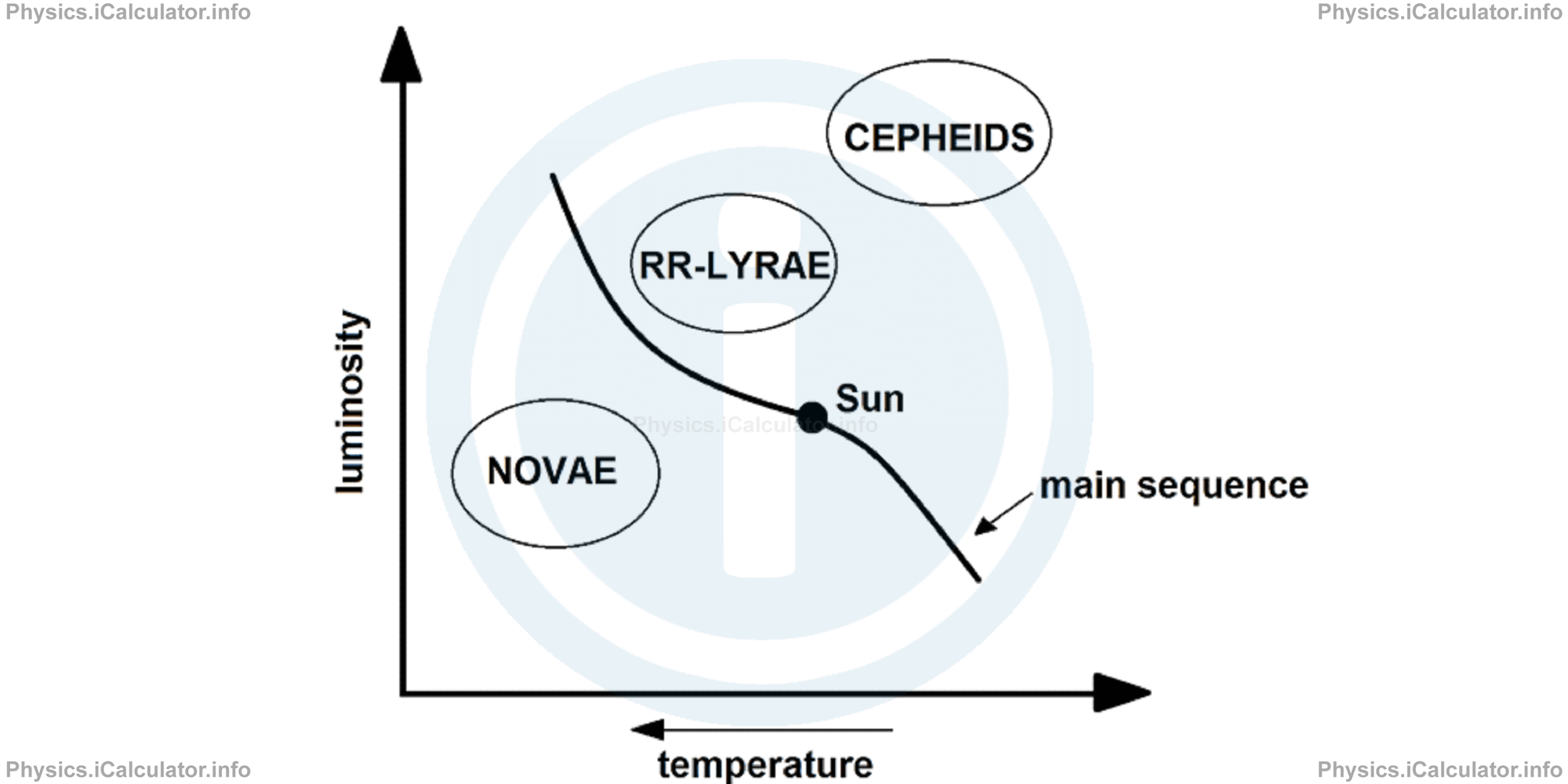Menu
Physics Lesson 22.4.5 - Other Types of Stars
Please provide a rating, it takes seconds and helps us to keep this resource free for all to use
Welcome to our Physics lesson on Other Types of Stars, this is the fifth lesson of our suite of physics lessons covering the topic of Stars, you can find links to the other lessons within this tutorial and access additional physics learning resources below this lesson.
Other Types of Stars
Besides the four categories of stars explained above, which don't change their appearance with time, there also exist a variety of stars known as variable stars. For several reasons, the illumination produced by such stars changes with time. Here, we will deal only with three types of variable stars: Cepheids, RR-Lyrae and Novae. The simplified H-R diagram below shows the position of each of these star categories.

Cepheids are stars whose illumination varies periodically with time. This period varies from a few days to a few weeks. Moreover, the illumination of these stars is proportional to the period of variation. This important feature allows astronomers to measure long distances in the Universe.
RR-Lyrae stars. These too are stars with periodical illumination but unlike cepheids, this period of variation ranges from a few hours to a few tens of hours.
Novae are stars the illumination of which changes in an explosive way. Thus, their illumination suddenly increases by 10 units apparent magnitude and then, it decreases gradually within a few months to the original state.
You have reached the end of Physics lesson 22.4.5 Other Types of Stars. There are 5 lessons in this physics tutorial covering Stars, you can access all the lessons from this tutorial below.
More Stars Lessons and Learning Resources
Whats next?
Enjoy the "Other Types of Stars" physics lesson? People who liked the "Stars lesson found the following resources useful:
- Types Feedback. Helps other - Leave a rating for this types (see below)
- Cosmology Physics tutorial: Stars. Read the Stars physics tutorial and build your physics knowledge of Cosmology
- Cosmology Revision Notes: Stars. Print the notes so you can revise the key points covered in the physics tutorial for Stars
- Cosmology Practice Questions: Stars. Test and improve your knowledge of Stars with example questins and answers
- Check your calculations for Cosmology questions with our excellent Cosmology calculators which contain full equations and calculations clearly displayed line by line. See the Cosmology Calculators by iCalculator™ below.
- Continuing learning cosmology - read our next physics tutorial: Evolution of Stars
Help others Learning Physics just like you
Please provide a rating, it takes seconds and helps us to keep this resource free for all to use
We hope you found this Physics lesson "Stars" useful. If you did it would be great if you could spare the time to rate this physics lesson (simply click on the number of stars that match your assessment of this physics learning aide) and/or share on social media, this helps us identify popular tutorials and calculators and expand our free learning resources to support our users around the world have free access to expand their knowledge of physics and other disciplines.